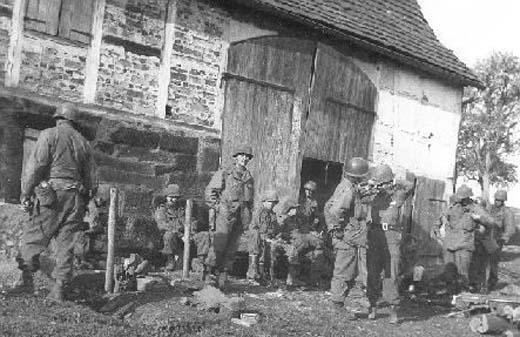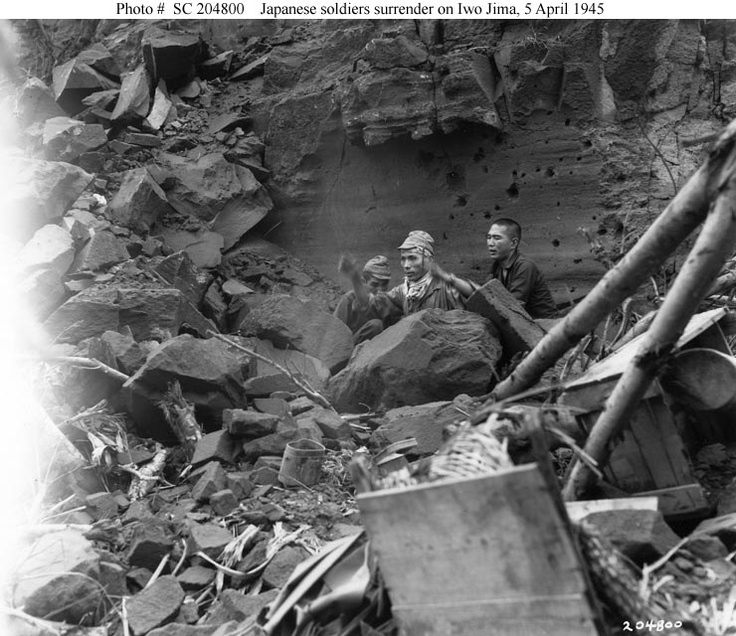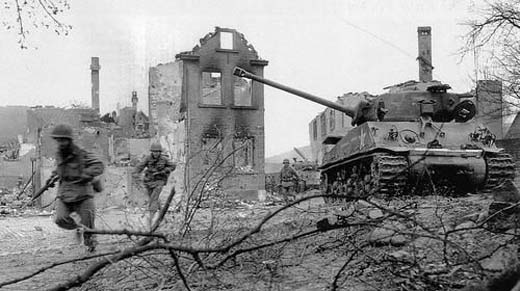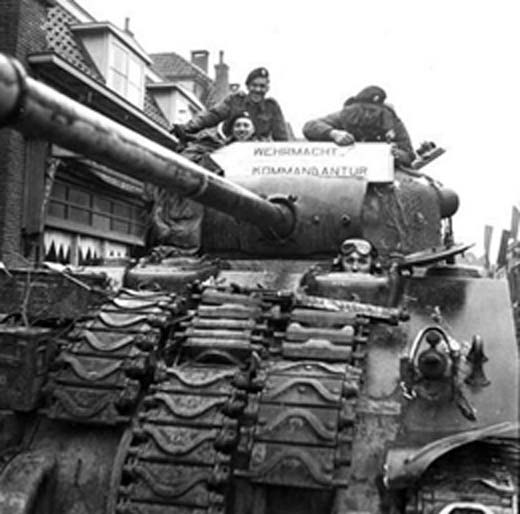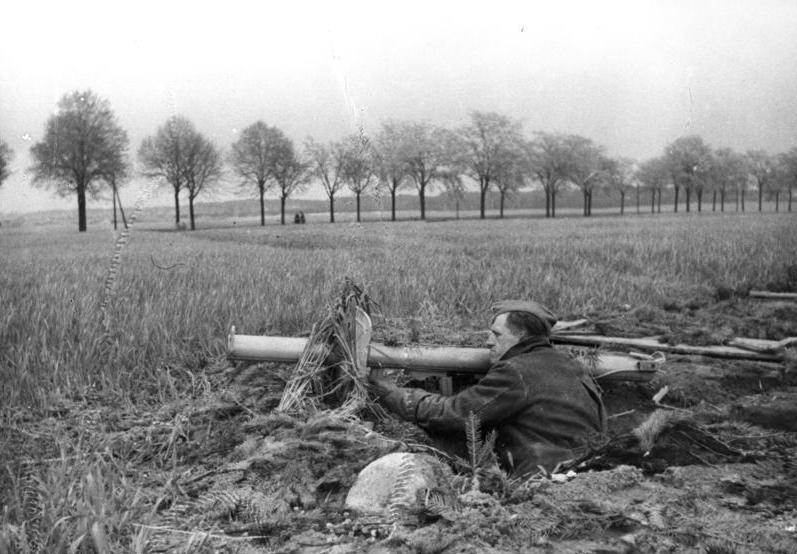Air Operations, Carolines
18 11th Heavy Bomb Group B-24s based at Guam attack the Truk Atoll.
[Air Operations, CBI
CHINA- 27 14th Air Force fighter-bombers attack various targets in southern China and northern French Inochina.
- 20 V Bomber Command B-24s attack port facilities and an airfield at Kowloon.
- Preceded by V Bomber Command B-25s, 3 3rd Light Bomb Group A-20s fitted with wing tanks fly from their base on Luzon to attack a small convoy off Hong Kong. The A-20s sink a small cargo ship.
Air Operations, East Indies
XIII Fighter Command P-38s attack Tawau and Tarakan Island.
[Air Operations, Europe
US 8th AIR FORCEGERMANY:
- 305 1st Air Division B-17s attack two munitions dumps.
- 73 1st Air Division B-17s attack a marshalling yard at Bayreuth.
- 151 2nd Air Division B-24s attack a marshalling yard at Plauen.
- 39 2nd Air Division B-24s attack a munitions dump at Bayreuth.
- 59 3rd Air Division B-17s attack an airfield.
- 13 3rd Air Division B-17s attack an electric plant.
- 54 3rd Air Division B-17s attack a munitions dump at Furth.
- 37 3rd Air Division B-17s attack a marshalling yard at Nurnberg.
- 271 3rd Air Division B-17s attack the main railroad station at Nurnbert (secondary).
- 33 heavy bombers attack targets of opportunity.
- 10 heavy bombers and 1 of 606 VIII Fighter Command escorts are lost.
- 8th and 9th Air Force fighter pilots down 14 Luftwaffe aircraft between 0750 and 1700 hours.
ITALY:
- 12th Air Force B-25s attack gun emplacements at La Spezia and bridges in northern Italy and adjacent areas of Austria.
- XXII TAC P-47s devote their entire effort to supporting the US 5th Army and attacking dumps and communications targets in the Po River valley.
- During the night, XXII TAC A-20s and A-26s attack bridges and an assembly area in the Po River valley.
ITALY:
- 15th Air Force heavy bombers attack rail targets at Alessandria, Brescia, and Turin, and the airfield complex at Udine.
- 15th Air Force heavy bombers attack a bridge, and 96 P-38s dive-bomb a rail bridge.
Air Operations, Formosa
38 V Bomber Command B-24s attack the harbor at Kiirun.
[Air Operations, Philippines
- 22 494th Heavy Bomb Group B-24s attack Bunawan.
- 5th Air Force bombers and fighter-bombers mount more than 180 effective sorties in support of US 6th Army ground forces on Luzon.
- A-20s and P-61s support US 8th Army ground forces on Cebu and Negros.
Air Operations, Ryukyus
- Despite bad weather, US Navy carrier aircraft support US 10th Army ground forces on Okinawa.
- VF-9 F6Fs down 1 G4M 'Betty' bomber and 2 Ki-45 'Nick' fighter over the Nobara airfield in the Sakishima Islands at 0545 hours.
- VF-23 F6Fs down 2 A6M Zeros near Tarama Shima at 0720 hours.
- A VF-45 F6F downs a Ki-57 'Topsy' transport plane at sea at 1529 hours.
- A VF-33 F6F downs an E16A 'Paul' reconnaissance plane off northern Okinawa at 1830 hours.
Battle of the Atlantic
- U-1055 is lost this date or later due to unknown circumstances, possibly a mine, mechanical or drill failure.
- The British trawler Willow observed an explosion within a British minefield in the Irish. It was later to be determined U-242.
|
|
- U-677 is destroyed in the Finkenwerder Bunker in Hamburg during an RAF bombing raid.
- U-1169 had been ordered into the English Channel and later disappeared. She may have been the victim of a mine or lost as a result of an accident arising from mechanical or drill failure.
- The US tanker Atlantic States (8537t) is torpedoed by U-857 off Cape Cod. There are no casualties and the ship is towed to Boston where she is repaired.
|
|
Czechoslovakia, Politics
At Kosice, the National Front government of Czechs and Slovaks announces its program and proclaims the democratic principles of the Czech Republic. Stating that the liberation of the country is the first priority, it calls on the population to undertake a broad and active struggle against the Germans.
Diplomatic Relations
Vyacheslav Molotov tells the Japanese ambassador in Moscow that the USSR plans to denounce the 1941 Non-Agression Pact between the 2 nations. The announcement opens the possibility of Japan fighting against the Russians in Manchuria. Molotov says the change in policy is a consequence of the Japanese alliance with Germany.
[Eastern Front
While fighting continues on the outskirts of Vienna and south of the Austrian capital, the German Army Group Center launches a series of counterattacks in Czechoslovakia to relieve Russian pressure on Moravska-Ostrava. In East Prussia, the Russians prepare to launch a massive attack on Königsberg after 4 days of heavy air and artillery preparation. Taking part in the operation are the 48th, 50th 11th and 39 Guards Armies, with the Keilsberg group, supported by 2,500 aircraft. The Germans in this sector can put up 200 fighters. Defending the city is the German 4th Army under Gen Friedrich-Wilhelm Müller, which also holds open the only escape route for the German forces in northern Latvia.
SOUTHERN SECTORThe 46th Army begins its attack toward Vienna, crossing the Danube west of Bratislava in order to envelop the city from the north. The 4th Guards Army is already attacking to the southeast. Dietrich's 6th SS plans to make a stand in Vienna and fight for every street.
[Germany, Home Front
Schwarze Korps, the official organ of the Gestapo, admits that Germany is 'only days or perhaps weeks from absolute collapse.'
[Italy
In the US 5th Army sector, the 92nd Div launches an attack in the direction of Massa.
[Japan, Politics
Gen Kuniaki Koiso and his cabinet resign. Adm Kantaro Suzuki froms the new government. Shigenori Togo is Foreign Minister and Hiranuma Kiichiro President of the Privy Council. There is less military influence in this Cabinet than in Koiso's and all its members are agreed that no reasonable offer of peace should be turned down. Some even go as far as to think that any offer should be accepted if this is the only way that invasion can be avoided.
[Okinawa
The American 10th Army is virtually pinned down by the Japanese resistance. The 22nd Regt of the 6th Marine Div does manage to make some progress northward in the area of the Isthmus of Ishikawa, the narrowest part of the island. Meanwhile the Americans carry on with occupying the islets off the coast. The battleship Nevada is damaged by fire from a shore battery. The Japanese decide to launch their big kamikaze attack the next day, and also to open their desperate Operation TEN-GO, in which they will deploy every ship in the Japanese navy still effective, i.e. the super-battleship Yamato, 72,800 tons, the light cruiser Yuhagi and 8 destroyers. This 2nd Fleet, or 'special surface attack force', is to ground itself off the coast of Okinawa to form a sort of unsinkable fortress. There is to be no return; the ship is given only enough fuel to reach its objective.
Japanese kamikaze aircraft attack in mass waves around Okinawa. US shipping suffers heavily. Damaged in the day's action include the battleship Nevada (BB-36) by a coastal defense gun and the light minelayer Harry F. Bauer by an aircraft torpedo. Several ships are damaged in collisions trying to avoid Japanese aircraft. These include the seaplane tender Thornton (AVD-11), the oiler Ashtabula (AO-51), the oiler Escalante (AO-70), the repair ship Agenor (ARL-3) and the landing craft LST-273, LST-698, LST-810, LST-940 and LST-1000.
[Pacific
- The Japanese submarine RO-41 is sunk by the US destroyer Hudson (DD-475) in the Okinawa area.
- Mine laid by USAAF B-29 sinks the Japanese merchant cargo ship No.13 Nichinan Maru 2 miles southeast of Hesaki Light.
Philippines
On Luzon in the US XI Corps sector, 1 regiment of the 43rd Div advances along the Bay Lagoon (Laguna de Bay), south of Manila, occupying Lumban and a bridge over the Pagsanjan River. In the Lumban area the 5th Cav, US XIV Corps, links up with the 43rd Div as it comes south along the east bank of the Bay Lagoon.
[Western Front
The I Corps of the Canadian 1st Army completes the liberation of the area between Nijmegen and the lower Rhine, while the II Corps establishes a bridgehead over the Twenthe Canal, east of the Ijssel.
In the British 2nd Army sector, the XII Corps reinforces its bridgehead over the Dortmund-Ems Canal and the VIII Corps, after taking Osnabrück, move on toward the Weser. While the forces of the XIII Corps prepare to cross the Weser near Minden, the XIX Corps reaches the river south of Hamelin and even manages to send some units over the river. The XVIII Airborne Corps and the III Corps, US 1st Army, are heavily engaged against the Ruhr pocket. The US 3rd Army advances with all its corps, the XX, VIII, V and XII, from the Kassel-Fulda line toward the east, heading for the Weser and the area of Ohrdruf.
In the US 7th Army sector the XV Corps capture Gemünden and the XXI Corps completes the crossing of the Main at Würzburg.
[Images from April 5, 1945
|
|
|
|
|
|
Inspecting a Japanese Armored Recovery Vehicle |
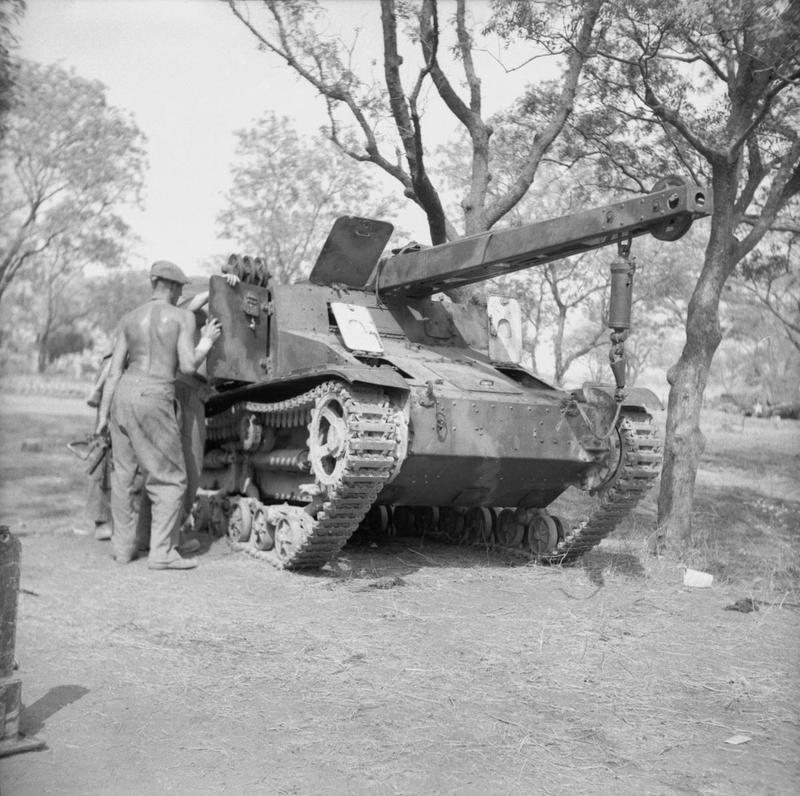 |
